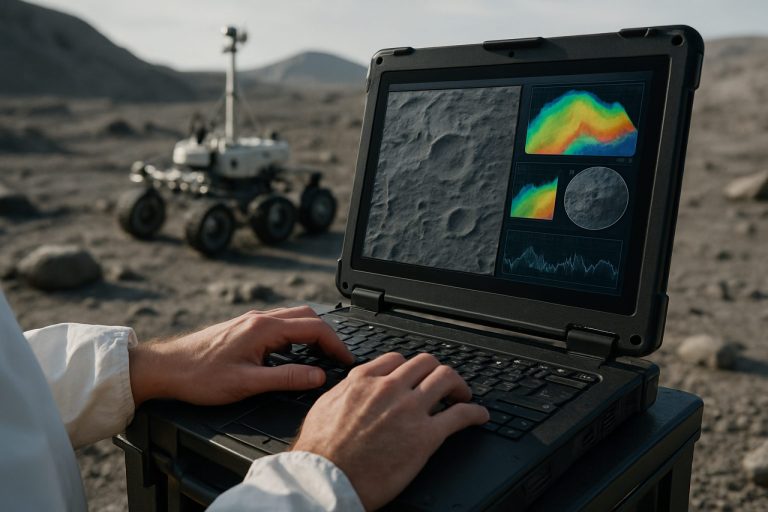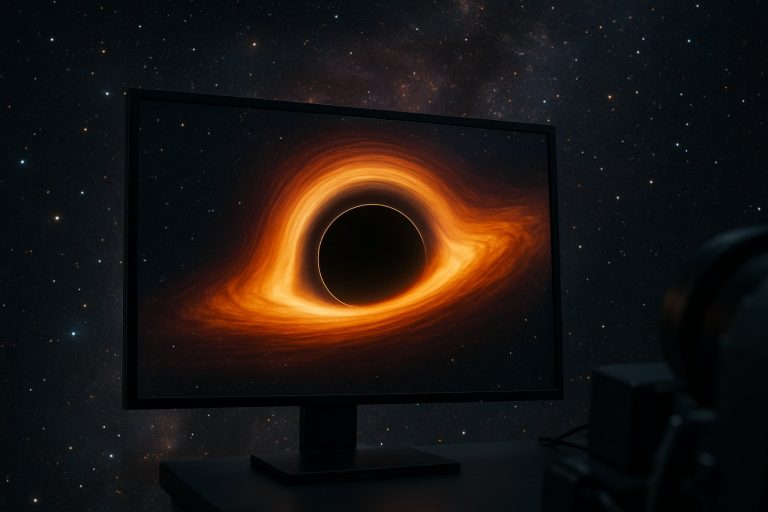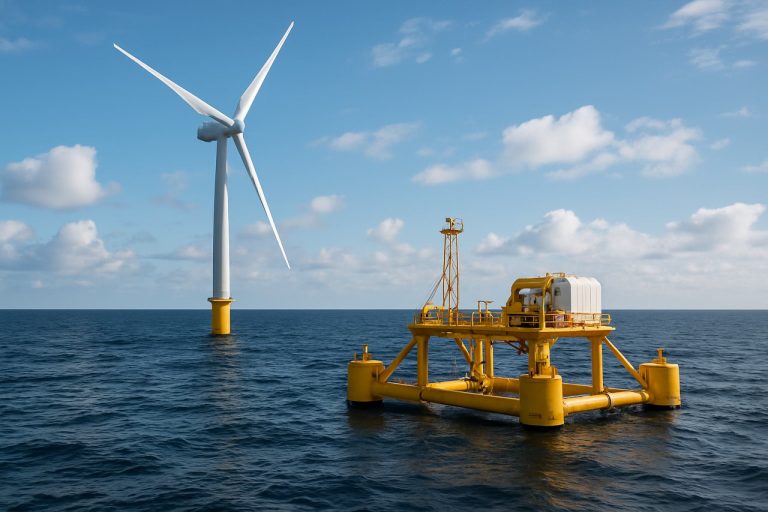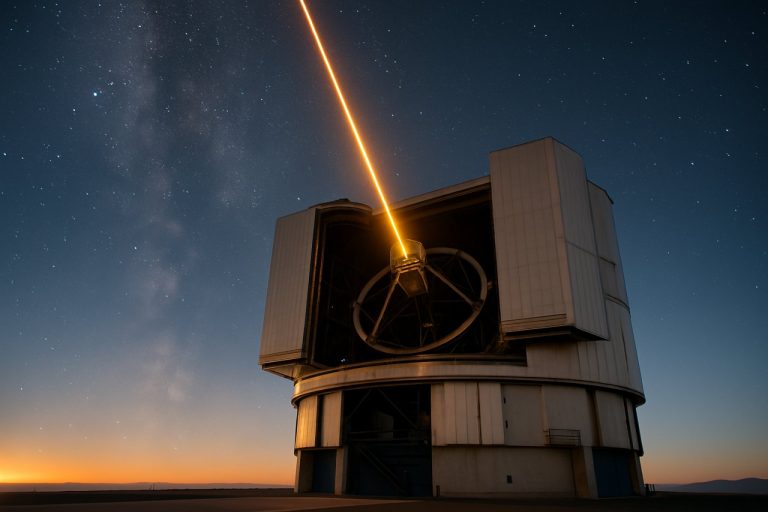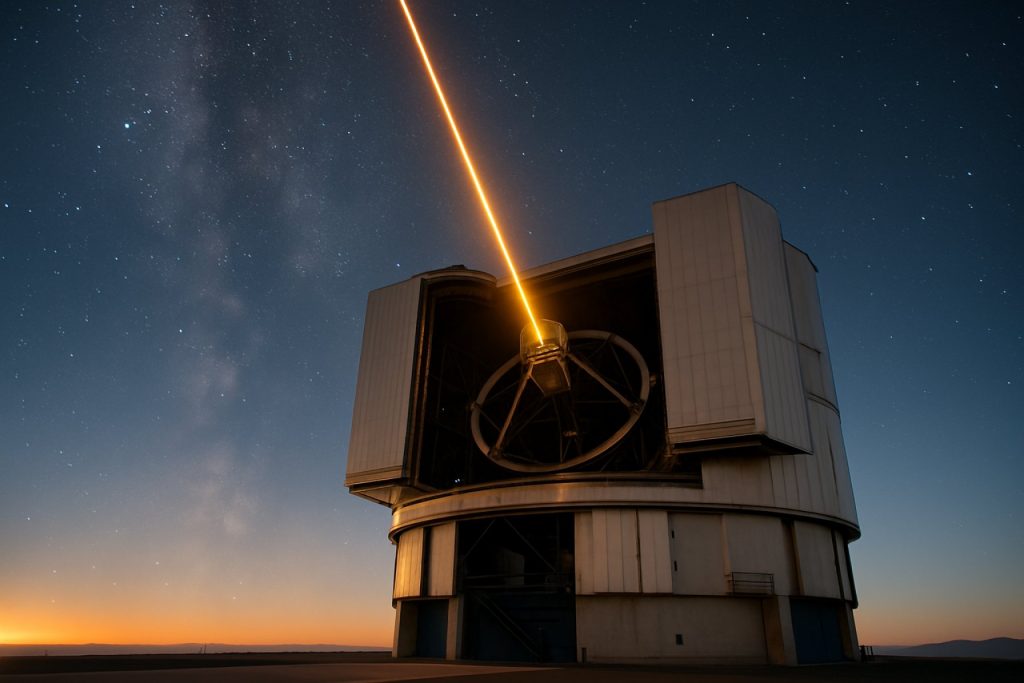
Adaptive Optics for Ground & Space Telescopes in 2025: Unleashing Unprecedented Imaging Precision and Market Expansion. Explore How Next-Gen AO Systems Are Transforming Astronomy and Satellite Observation.
- Executive Summary: The State of Adaptive Optics in 2025
- Market Size & Forecast (2025–2030): Growth Trajectories and Key Drivers
- Core Technologies: Wavefront Sensors, Deformable Mirrors, and Control Algorithms
- Ground-Based Telescopes: AO Integration and Performance Enhancements
- Space-Based Telescopes: Overcoming New Frontiers with AO
- Key Players & Industry Initiatives (e.g., eso.org, northropgrumman.com, thorlabs.com)
- Emerging Applications: Exoplanet Imaging, Earth Observation, and Defense
- Regional Analysis: North America, Europe, Asia-Pacific, and Rest of World
- Challenges & Barriers: Cost, Complexity, and Technological Limitations
- Future Outlook: Innovations, Collaborations, and Market Opportunities Through 2030
- Sources & References
Executive Summary: The State of Adaptive Optics in 2025
Adaptive optics (AO) technology has become a cornerstone of modern astronomical observation, enabling ground- and space-based telescopes to achieve near-diffraction-limited imaging by compensating for atmospheric and instrumental distortions. As of 2025, the field is experiencing rapid advancements, driven by the commissioning of next-generation observatories and the maturation of AO components and control systems.
On the ground, the deployment of extremely large telescopes (ELTs) is a major catalyst for AO innovation. The European Southern Observatory (ESO) is leading the construction of the 39-meter Extremely Large Telescope (ELT), which will feature a sophisticated multi-conjugate adaptive optics (MCAO) system. This system, incorporating thousands of actuators and advanced wavefront sensors, is designed to deliver unprecedented image clarity across a wide field of view. Similarly, the Thirty Meter Telescope International Observatory (TMT) and the Giant Magellan Telescope Organization (GMTO) are integrating advanced AO modules, including laser guide star facilities and real-time control systems, to push the boundaries of ground-based astronomy.
Key suppliers such as Thorlabs and ALPAO are providing deformable mirrors and wavefront correction devices, while First Light Imaging is delivering high-speed, low-noise cameras essential for wavefront sensing. These companies are responding to the demand for higher actuator counts, faster response times, and improved reliability, which are critical for the performance of AO systems in the new generation of telescopes.
In space, adaptive optics is being adapted for use in future missions where precision imaging is paramount. The National Aeronautics and Space Administration (NASA) and the European Space Agency (ESA) are both investing in AO technologies for exoplanet imaging and high-contrast coronagraphy. The upcoming Nancy Grace Roman Space Telescope will employ advanced wavefront control to suppress starlight and enable direct imaging of exoplanets, while ESA’s planned missions are exploring deformable mirror integration for similar purposes.
Looking ahead, the outlook for adaptive optics in both ground and space telescopes is robust. The next few years will see the operational debut of ELTs with integrated AO, the refinement of real-time control algorithms leveraging machine learning, and the expansion of AO applications into new wavelength regimes. As AO technology continues to evolve, it will remain central to the quest for higher resolution and deeper insights into the universe.
Market Size & Forecast (2025–2030): Growth Trajectories and Key Drivers
The adaptive optics (AO) market for ground and space telescopes is poised for robust growth between 2025 and 2030, driven by escalating investments in astronomical research, the commissioning of next-generation observatories, and technological advancements in wavefront correction. As of 2025, the market is characterized by a surge in demand from both public and private sector initiatives, with a particular emphasis on large-scale ground-based telescopes and emerging space-based platforms.
Key drivers include the deployment of extremely large telescopes (ELTs) such as the European Southern Observatory’s Extremely Large Telescope (ELT), which is scheduled to achieve first light in the coming years. The ELT will feature a sophisticated AO system designed and integrated by European Southern Observatory and its industrial partners, enabling unprecedented image clarity by compensating for atmospheric turbulence. Similarly, the Thirty Meter Telescope (TMT) and the Giant Magellan Telescope (GMT) are advancing AO capabilities, with major contributions from organizations like National Science Foundation and California Institute of Technology.
On the commercial side, companies such as Thorlabs, CILAS, and Northrop Grumman are actively developing and supplying AO components, including deformable mirrors, wavefront sensors, and real-time control systems. These firms are responding to increased procurement from both research institutions and space agencies, as AO becomes integral to new missions and observatories. For instance, Northrop Grumman is involved in the development of AO systems for space-based telescopes, supporting NASA and other agencies in their pursuit of high-contrast imaging for exoplanet detection and deep-space observation.
The market outlook is further buoyed by the integration of artificial intelligence and machine learning into AO control algorithms, which is expected to enhance correction speed and accuracy. This is particularly relevant for dynamic environments such as ground-based laser communication and satellite tracking, where AO is increasingly critical. Additionally, the miniaturization of AO components is opening new opportunities for small satellite (smallsat) and CubeSat missions, broadening the addressable market.
Between 2025 and 2030, the AO market for telescopes is anticipated to experience a compound annual growth rate (CAGR) in the high single digits, with the strongest expansion in regions hosting major observatory projects—namely North America, Europe, and parts of Asia-Pacific. The convergence of public funding, private investment, and technological innovation positions adaptive optics as a cornerstone technology for the next era of astronomical discovery and space exploration.
Core Technologies: Wavefront Sensors, Deformable Mirrors, and Control Algorithms
Adaptive optics (AO) systems are critical for enhancing the resolution of ground and space telescopes by compensating for wavefront distortions caused by atmospheric turbulence or optical imperfections. The core technologies underpinning AO—wavefront sensors, deformable mirrors, and control algorithms—are experiencing significant advancements as the astronomy community prepares for the next generation of observatories in 2025 and beyond.
Wavefront Sensors: The Shack-Hartmann wavefront sensor remains the most widely deployed technology, but pyramid wavefront sensors are gaining traction due to their higher sensitivity, especially in low-light conditions. Companies such as Thorlabs and Imagine Optic are actively developing and supplying advanced wavefront sensing modules for both research and commercial telescopes. These sensors are being integrated into major projects like the Extremely Large Telescope (ELT) and the Thirty Meter Telescope (TMT), which are scheduled to see first light in the coming years.
Deformable Mirrors: Deformable mirrors (DMs) are the actuators at the heart of AO systems, dynamically reshaping their surfaces to correct incoming wavefronts. The trend is toward higher actuator counts and improved reliability. Boston Micromachines Corporation is a leader in microelectromechanical systems (MEMS) DMs, offering devices with thousands of actuators for high-order correction. CILAS and ALPAO are also prominent, providing DMs for both astronomical and laser applications. These mirrors are being tailored for the unique requirements of space-based telescopes, where robustness and low mass are essential, as well as for the adaptive secondary mirrors in ground-based giants like the ELT.
Control Algorithms: The sophistication of AO control algorithms is rapidly increasing, leveraging advances in real-time computing and artificial intelligence. These algorithms must process sensor data and command DMs at kilohertz rates with minimal latency. Research groups and industry players are collaborating to implement predictive control and machine learning techniques, aiming to further reduce residual wavefront errors. European Southern Observatory and NASA are at the forefront, developing and deploying advanced AO control software for their flagship telescopes.
Looking ahead to 2025 and the following years, the integration of these core technologies is expected to enable diffraction-limited imaging on unprecedented scales, both from the ground and in space. The synergy between sensor innovation, actuator miniaturization, and algorithmic intelligence will be pivotal in supporting the scientific goals of next-generation observatories and exoplanet imaging missions.
Ground-Based Telescopes: AO Integration and Performance Enhancements
Adaptive optics (AO) technology continues to revolutionize ground-based astronomy by compensating for atmospheric turbulence, enabling telescopes to achieve near-diffraction-limited imaging. As of 2025, AO integration is a central focus for both existing observatories and next-generation facilities, with significant advancements in system complexity, real-time correction speed, and scientific output.
Major observatories are upgrading their AO systems to enhance performance. The European Southern Observatory (ESO) has implemented advanced AO modules on the Very Large Telescope (VLT), including the Adaptive Optics Facility (AOF) that utilizes multiple laser guide stars and deformable secondary mirrors. This has resulted in improved image sharpness and increased sky coverage, directly benefiting high-contrast imaging and spectroscopy of exoplanets and distant galaxies.
Looking ahead, the integration of AO is a cornerstone for the upcoming Extremely Large Telescopes (ELTs). The ESO’s Extremely Large Telescope (ELT), scheduled for first light in the coming years, will feature a 39-meter segmented mirror and a sophisticated multi-conjugate AO system. This system will employ thousands of actuators and several laser guide stars to correct atmospheric distortions across a wide field of view, enabling unprecedented resolution and sensitivity for ground-based observations.
In North America, the Giant Magellan Telescope Organization (GMTO) is developing the Giant Magellan Telescope (GMT), which will utilize adaptive secondary mirrors with over 4,000 actuators. The GMT’s AO system is designed to deliver high Strehl ratios in the near-infrared, supporting direct imaging of exoplanets and detailed studies of stellar populations. Similarly, the Thirty Meter Telescope International Observatory (TIO) is advancing its AO capabilities, with plans for multi-conjugate and multi-object AO modules to maximize scientific versatility.
Key suppliers and technology partners are instrumental in these developments. Thorlabs and ALPAO are recognized for their deformable mirrors and wavefront sensors, which are integral to AO systems worldwide. ESO and GMTO collaborate with these and other manufacturers to customize AO components for large-scale telescopes.
The outlook for AO in ground-based astronomy is robust. Over the next few years, further improvements in real-time control algorithms, sensor sensitivity, and actuator density are expected. These enhancements will not only boost the scientific return of flagship observatories but also enable smaller telescopes to adopt AO, democratizing high-resolution imaging across the astronomical community.
Space-Based Telescopes: Overcoming New Frontiers with AO
Adaptive optics (AO) has long been a transformative technology for ground-based telescopes, compensating for atmospheric turbulence to deliver sharper images. In 2025 and the coming years, AO is increasingly being adapted and innovated for space-based telescopes, where it addresses new challenges such as dynamic structural deformations, thermal fluctuations, and the need for ultra-precise wavefront control. The integration of AO in space observatories is poised to unlock unprecedented scientific capabilities, particularly in exoplanet imaging, high-contrast astrophysics, and deep-universe exploration.
One of the most significant upcoming milestones is the deployment of the National Aeronautics and Space Administration’s Nancy Grace Roman Space Telescope, scheduled for launch in 2027. The Roman Telescope will feature a state-of-the-art coronagraph instrument with deformable mirrors and wavefront sensors—core AO components—enabling direct imaging of exoplanets and circumstellar disks with contrast ratios previously unattainable in space. This mission will serve as a critical technology demonstrator for future flagship missions, such as the proposed Habitable Worlds Observatory, which will require even more advanced AO systems for Earth-like planet detection.
Meanwhile, the European Space Agency (ESA) is advancing AO for space through its LISA (Laser Interferometer Space Antenna) mission, set for launch in the mid-2030s. LISA will employ precision wavefront sensing and control to maintain the alignment of its interferometric arms over millions of kilometers, a feat only possible with sophisticated AO-inspired technologies. These developments are complemented by ongoing research and technology maturation efforts at organizations such as Jet Propulsion Laboratory and Space Telescope Science Institute, which are developing miniaturized, radiation-hardened deformable mirrors and high-speed wavefront sensors suitable for the harsh space environment.
On the commercial side, companies like Northrop Grumman and Ball Aerospace are key suppliers of AO hardware for both government and private space telescope projects. Their expertise in precision optics, actuators, and control systems is critical for the next generation of space observatories. Additionally, Carl Zeiss AG and Thorlabs are expanding their portfolios to include space-qualified AO components, reflecting the growing demand for these technologies.
Looking ahead, the convergence of AO advancements in both ground and space domains is expected to drive a new era of astronomical discovery. As AO systems become more compact, robust, and autonomous, their integration into small satellites and distributed telescope arrays will further democratize high-resolution space imaging, opening new frontiers for both scientific and commercial applications.
Key Players & Industry Initiatives (e.g., eso.org, northropgrumman.com, thorlabs.com)
The adaptive optics (AO) sector for ground and space telescopes is characterized by a dynamic interplay of established scientific organizations, specialized optics manufacturers, and aerospace giants. As of 2025, the field is witnessing significant investments and collaborations aimed at enhancing imaging resolution and compensating for atmospheric distortions, with a focus on both astronomical research and emerging commercial applications.
A leading force in AO development is the European Southern Observatory (ESO), which continues to pioneer advanced AO systems for its suite of telescopes, including the Very Large Telescope (VLT) and the upcoming Extremely Large Telescope (ELT). The ELT, slated for first light in the coming years, will feature a multi-conjugate adaptive optics system designed to deliver unprecedented image clarity, setting new standards for ground-based astronomy.
In the United States, Northrop Grumman plays a pivotal role in the integration of AO technologies for both ground and space-based observatories. The company is involved in the development of deformable mirrors and wavefront sensors, critical components for next-generation space telescopes and defense-related optical systems. Their expertise is increasingly sought after for missions requiring high-precision imaging beyond Earth’s atmosphere.
On the component manufacturing front, Thorlabs is a key supplier of AO hardware, including deformable mirrors, wavefront sensors, and control electronics. Their modular AO kits are widely used in research laboratories and observatories worldwide, supporting both custom and standardized AO implementations. Thorlabs’ ongoing product development is closely aligned with the needs of the astronomical community, as well as biomedical and industrial imaging sectors.
Other notable contributors include Carl Zeiss AG, which provides high-precision optics and AO solutions for both terrestrial and space applications, and CILAS, a French company specializing in laser and AO technologies for scientific and defense markets. Additionally, Iris AO is recognized for its segmented MEMS deformable mirrors, which are increasingly adopted in both research and commercial AO systems.
Industry initiatives in 2025 are marked by collaborative projects between research institutions and private companies, aiming to push the boundaries of AO performance. The trend toward larger telescopes, such as the ELT and the Thirty Meter Telescope (TMT), is driving demand for more sophisticated AO systems. Meanwhile, the miniaturization and ruggedization of AO components are opening new opportunities for space-based platforms and satellite imaging, with several demonstration missions planned for the near future.
Looking ahead, the AO industry is expected to benefit from increased funding for astronomical infrastructure, as well as the growing interest in high-resolution Earth observation and exoplanet research. The convergence of expertise from organizations like ESO, Northrop Grumman, and Thorlabs will likely accelerate innovation and expand the reach of adaptive optics technologies across scientific and commercial domains.
Emerging Applications: Exoplanet Imaging, Earth Observation, and Defense
Adaptive optics (AO) technology is rapidly advancing, enabling new frontiers in astronomical and terrestrial imaging. In 2025 and the coming years, AO is poised to play a transformative role in three key application areas: exoplanet imaging, Earth observation, and defense.
For exoplanet imaging, AO systems are critical for correcting atmospheric distortions, allowing ground-based telescopes to achieve near-diffraction-limited performance. The next generation of extremely large telescopes (ELTs), such as the European Southern Observatory‘s Extremely Large Telescope (ELT), the Thirty Meter Telescope International Observatory (TMT), and the Giant Magellan Telescope Organization (GMT), are all being equipped with advanced AO modules. These systems, including multi-conjugate and laser guide star AO, are designed to directly image exoplanets and analyze their atmospheres with unprecedented sensitivity. The ELT, for example, is expected to begin first-light observations in the next few years, with AO systems developed in collaboration with leading optics firms such as Thales Group and Carl Zeiss AG.
In Earth observation, AO is increasingly being integrated into both ground-based and spaceborne platforms to enhance image resolution and data quality. Companies like Leonardo S.p.A. and Northrop Grumman Corporation are developing AO-enabled optical payloads for satellites and airborne systems, targeting applications such as environmental monitoring, disaster response, and precision agriculture. These systems compensate for atmospheric turbulence and platform-induced vibrations, delivering sharper images and more accurate measurements. The trend is expected to accelerate as governments and commercial operators seek higher-resolution, real-time Earth observation capabilities.
- Defense applications are also driving AO innovation. AO-equipped surveillance and targeting systems are being developed to improve imaging through atmospheric turbulence, particularly for long-range identification and tracking. Major defense contractors, including Lockheed Martin Corporation and Raytheon Technologies Corporation, are investing in AO for both terrestrial and space-based platforms. These technologies are critical for missile defense, space situational awareness, and intelligence, surveillance, and reconnaissance (ISR) missions.
Looking ahead, the convergence of AO with machine learning and real-time data processing is expected to further enhance performance across these sectors. As AO components become more compact, robust, and cost-effective, their adoption in both scientific and commercial missions is set to expand significantly through the late 2020s.
Regional Analysis: North America, Europe, Asia-Pacific, and Rest of World
The global landscape for adaptive optics (AO) in ground and space telescopes is shaped by significant regional investments, technological leadership, and strategic collaborations. As of 2025 and looking ahead, North America, Europe, Asia-Pacific, and the Rest of World regions each demonstrate unique strengths and trajectories in AO development and deployment.
North America remains a dominant force, driven by the United States’ robust astronomical infrastructure and funding. Major observatories such as the Keck Observatory and the Gemini Observatory have pioneered AO integration, with ongoing upgrades to their systems. The Thirty Meter Telescope (TMT), under development, is set to feature advanced AO capabilities, leveraging expertise from institutions like the TMT International Observatory and suppliers such as Northrop Grumman and Lockheed Martin. The National Aeronautics and Space Administration (NASA) continues to invest in AO for both ground-based and space missions, including the Nancy Grace Roman Space Telescope, which will utilize AO for exoplanet imaging.
Europe is a global leader in AO research and implementation, particularly through the European Southern Observatory (ESO). The Extremely Large Telescope (ELT), scheduled for first light in the coming years, will deploy a sophisticated multi-conjugate AO system, setting new standards for image correction. European companies such as Thales Group and Leonardo S.p.A. are key suppliers of AO components, including deformable mirrors and wavefront sensors. Collaborative projects, such as the Adaptive Optics Facility (AOF) at the Very Large Telescope (VLT), further cement Europe’s leadership in this domain.
Asia-Pacific is rapidly expanding its AO capabilities, with China and Japan at the forefront. China’s Five-hundred-meter Aperture Spherical Telescope (FAST) and the Large Sky Area Multi-Object Fiber Spectroscopic Telescope (LAMOST) are integrating AO technologies, supported by national research institutes and companies like China Aerospace Science and Industry Corporation. Japan’s Subaru Telescope, operated by the National Astronomical Observatory of Japan (NAOJ), continues to upgrade its AO systems, with a focus on exoplanet and deep-sky observations.
Rest of World regions, including Australia, South Africa, and parts of South America, are increasingly participating in global AO initiatives. The Square Kilometre Array (SKA), with sites in Australia and South Africa, is expected to benefit from AO advancements, though its primary focus is radio astronomy. Regional collaborations and technology transfers are enabling these areas to adopt AO systems, often in partnership with established players from North America and Europe.
Looking forward, the next few years will see intensified cross-regional collaborations, with North America and Europe maintaining technological leadership, while Asia-Pacific accelerates its AO adoption and innovation. The global AO ecosystem is poised for growth, driven by the commissioning of next-generation telescopes and the expanding role of private and public sector partnerships.
Challenges & Barriers: Cost, Complexity, and Technological Limitations
Adaptive optics (AO) systems have become indispensable for both ground-based and space telescopes, enabling astronomers to correct for atmospheric distortions and achieve near-diffraction-limited imaging. However, the deployment and advancement of AO technologies face significant challenges and barriers, particularly in terms of cost, system complexity, and technological limitations. These issues are expected to persist and evolve through 2025 and the following years as the astronomical community pushes for higher performance and broader adoption.
Cost remains a primary barrier to widespread AO implementation. The development, integration, and maintenance of AO systems require substantial financial investment, often running into tens of millions of dollars for large observatories. For example, the Extremely Large Telescope (ELT) project, led by European Southern Observatory, allocates a significant portion of its budget to advanced AO modules. The high cost is driven by the need for custom components such as deformable mirrors, high-speed wavefront sensors, and real-time control computers, which are often produced in limited quantities by specialized suppliers like Thorlabs and Carl Zeiss AG.
System complexity is another formidable challenge. AO systems require precise coordination between hardware and software, including real-time data processing at kilohertz rates and the integration of multiple subsystems. The complexity increases with the scale of the telescope and the desired correction quality. For instance, multi-conjugate AO (MCAO) and laser guide star (LGS) systems, such as those developed for the Gemini Observatory, involve multiple deformable mirrors and artificial stars, demanding sophisticated calibration and maintenance protocols. This complexity can lead to increased downtime, higher operational costs, and a need for highly trained personnel.
Technological limitations also constrain AO performance. Current deformable mirror technologies, while rapidly advancing, still face issues related to actuator density, response speed, and reliability. The development of new materials and microelectromechanical systems (MEMS) mirrors by companies like Boston Micromachines Corporation is promising, but scaling these solutions for large telescopes remains a technical hurdle. Additionally, wavefront sensors must operate at high sensitivity and speed, which is challenging in low-light astronomical conditions.
For space telescopes, AO faces unique barriers. The absence of atmospheric turbulence eliminates the primary motivation for AO, but the need for ultra-precise wavefront control persists, especially for exoplanet imaging and high-contrast observations. Space-based AO systems must be highly reliable, lightweight, and resistant to radiation, which complicates their design and increases costs. Organizations like NASA and European Space Agency are investing in next-generation AO technologies for missions such as the Nancy Grace Roman Space Telescope, but deployment timelines and budgets remain uncertain.
Looking ahead to 2025 and beyond, overcoming these challenges will require continued collaboration between research institutions, industry leaders, and government agencies. Advances in materials science, real-time computing, and manufacturing processes are expected to gradually reduce costs and complexity, but AO will likely remain a high-end, resource-intensive technology for the foreseeable future.
Future Outlook: Innovations, Collaborations, and Market Opportunities Through 2030
Adaptive optics (AO) technology is poised for significant advancements and market expansion through 2030, driven by both ground-based and space telescope initiatives. The next few years will see a convergence of innovation, international collaboration, and new commercial opportunities as AO systems become increasingly integral to astronomical research and emerging applications.
On the ground, the deployment of next-generation extremely large telescopes (ELTs) is a major catalyst. The European Southern Observatory (ESO) is progressing with the Extremely Large Telescope (ELT), which will feature a sophisticated multi-conjugate adaptive optics system to correct atmospheric turbulence in real time. Similarly, the Thirty Meter Telescope International Observatory (TMT) and the Giant Magellan Telescope Organization (GMTO) are integrating advanced AO modules, with first light expected in the latter half of the decade. These projects are fostering partnerships with leading AO technology providers such as Thorlabs, CILAS, and ALPAO, all of which are developing high-actuator-count deformable mirrors and fast wavefront sensors tailored for ELT-scale instruments.
In space, adaptive optics is transitioning from experimental to operational status. The National Aeronautics and Space Administration (NASA) and the European Space Agency (ESA) are investing in AO for future missions, including exoplanet imaging and high-contrast coronagraphy. The upcoming Nancy Grace Roman Space Telescope will employ advanced wavefront control, while ESA’s ARIEL mission is exploring AO for exoplanet atmosphere characterization. These efforts are expected to drive demand for compact, radiation-hardened AO components, with suppliers like Boston Micromachines Corporation and OKO Technologies actively developing space-qualified deformable mirrors.
Looking ahead, the AO market is set to benefit from cross-sector collaborations. Partnerships between observatories, universities, and industry are accelerating the translation of AO innovations into commercial products, including ophthalmic imaging and laser communications. The emergence of AI-driven wavefront correction and real-time data processing is anticipated to further enhance AO performance and reliability. As a result, the adaptive optics sector is expected to see robust growth, with new entrants and established players alike capitalizing on the expanding needs of both scientific and industrial users through 2030.
Sources & References
- European Southern Observatory
- Thirty Meter Telescope International Observatory
- Thorlabs
- National Aeronautics and Space Administration
- European Space Agency
- National Science Foundation
- California Institute of Technology
- CILAS
- Northrop Grumman
- Imagine Optic
- Boston Micromachines Corporation
- Space Telescope Science Institute
- Carl Zeiss AG
- Thales Group
- Leonardo S.p.A.
- Lockheed Martin Corporation
- Raytheon Technologies Corporation
- NAOJ
- European Southern Observatory
- Thorlabs
- Carl Zeiss AG
- Gemini Observatory
- Boston Micromachines Corporation
- NASA
- European Space Agency
- OKO Technologies
